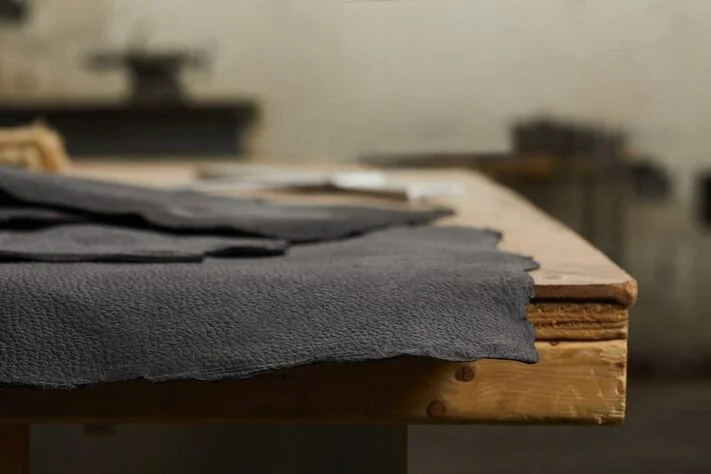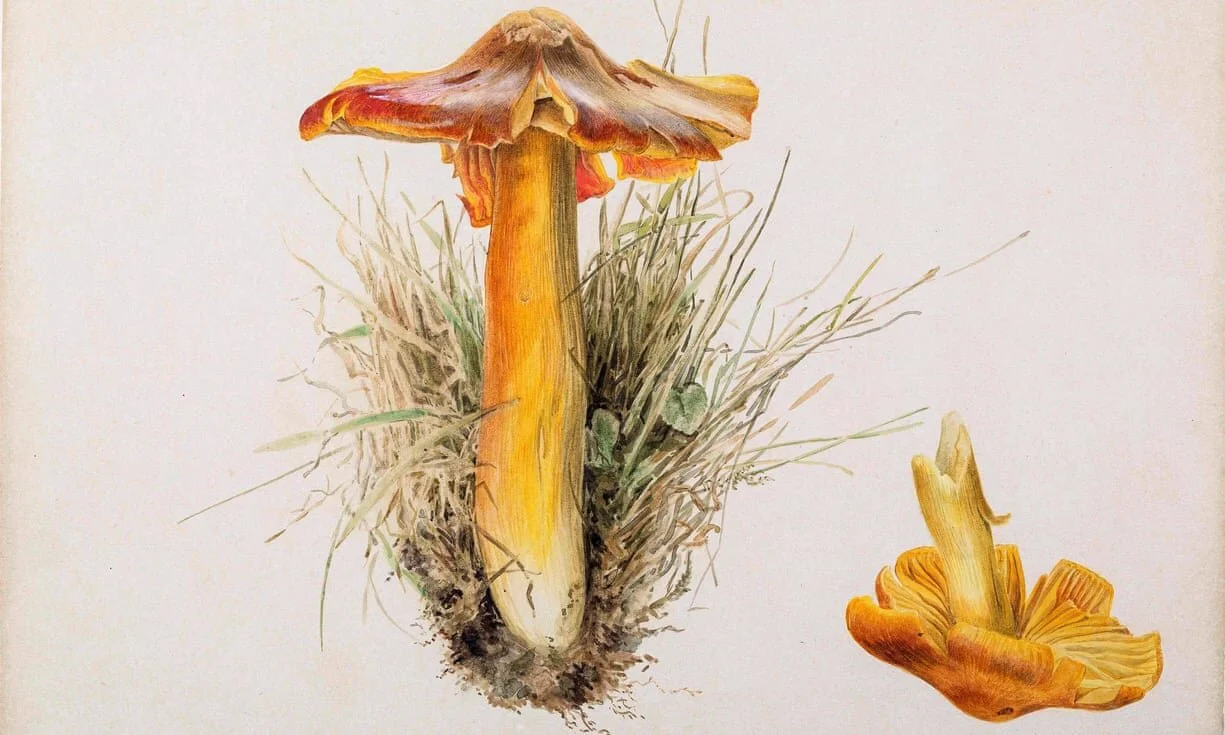Mushroom Lovers Gather At Somerset House London To Honor the Funghi Revolution
/Mushrooms are center stage in the development of Mylo™, a type of vegan leather derived from a substance called mycelium. Bolt Threads describes the revolutionary material as the product of mycelium’s role as “the branching underground structure of mushrooms. It grows as tiny threads that form vast networks under the forest floor.”
Mylo™, embraced by the queen-of-green designer Stella McCartney, can be produced in days versus years, a process that minimizes further the environmental impact of the totally biodegradable, non-toxic material.
The daughter of famed Beatle Paul McCartney surely smiles over this latest manifestation of the magic powers of mushrooms.
Long associated with dark, dank places, decay and decomposition mushroom are winning a place in the spotlight. Medical research in 2019 established a positive correlation (although not yet causation) between eating mushrooms, a healthy brain and minimizing memory loss.
After noticing mushrooms popping up everywhere in artwork, Somerset House creator Francesca Gavin organized a 21st century art exhibit giving mushrooms their due. Called “Mushrooms: The Art, Design and Future of Fungi,” the show will premiere in January and run through April 26, 2020.
“I just noticed mushrooms popping up everywhere,” Gavin tells The Guardian’s Mark Brown. “I then kind of fell into a mushroom wormhole. … There is so much enthusiasm for mushrooms and so much innovation.”
The exhibition brings together the work of over 40 leading artists, designers and musicians, ‘Mushrooms’ looks at fungi’s colorful cultural legacy, as well as the promise it offers to reimagine our relationship with the planet.
American artist Cy Twombly’s collage portfolio paralleling natural world and human history is featured in the exhibition; watercolors from renowned author Beatrix Potter; composer John Cage’s limited edition ‘Mushroom Book’ of recipes, observations and illustrations, and inspiring works from emerging contemporary artists like Amanda Cobbett and Kristel Peters.
In the case of John Cage, his lifelong interest in mushrooms led him to reviving the New York Mycological Society in the 1950s. The composer supplemented his income, supplying hotels and fine restaurants including the Four Seasons with mushrooms he foraged in upstate New York.
Artsy shares a marvelous story about Cage participating in an Italian game show called ‘Lascia o Raddoppia’ (Double or Nothing). He chose mushrooms as his specialty subject. “Think carefully, Mr. Cage,” warned the host Mike Bongiorno at the $5-million-lire-question. “You must tell us the 24 names of the white-spored ‘Agaricus’ contained in ‘Atkinson’s Studies of American Fungi’.” Much to the audience’s surprise, the composer confidently responded, “I can enumerate the list alphabetically.”
Cage won the top prize of $10,000 (in 1959), using the money to buy a new piano and a Volkswagon bus for partner Merce Cunningham’s dance company.
Capitalizing on mushrooms’ dual powers of aesthetic appeal and sustainability, Kristel Peters imagines them as high heeled shoes.
Peters explains her ‘Growing Shoes’ process in the lab. Solid shapes function as heels, platforms and insoles of the shoe. In order to achieve these shapes, different waste streams such as coffee grounds and sawdust are used as substrates. The hollow shapes are grown pure in bottles or on fibers such as hemp and psyllium to achieve strength and structures.
Before publishing The Tale of Peter Rabbit in 1902, the British writer and illustrator Beatrix Potter was simply mad about mushrooms. The BBC explores Potter’s mushroom passion, an artistic investigation that produced about 300 fungi and lichen watercolors beginning at age 20. Large numbers of Potter’s artworks are housed at London’s V&A Museum.
A series of talks from leading artists and experts that accompany the free exhibition Mushrooms: The Art, Design and Future of Fungi, gatherings that span design, sustainability, health and beauty accompany the exhibit.





